#lcrd
Link
Welcome, stargazers, to another enlightening episode of Astronomy Daily! Your host, Tim Gibbs, and his AI co-host, Hallie, are here to navigate the cosmic news.
**Quick Announcements:**- Catch all episodes, past, present, and future, on [spacenuts.io](http://spacenuts.io) and [bytes.com](http://bytes.com).- Don't miss "Space Nuts" with Professor Fred Watson and Andrew Dunkley.- Subscribe to our daily newsletter for hand-picked stories.- Join our Facebook group, "Space Nuts podcast group," to discuss all things space.
**This Week’s Cosmic Highlights:**
1. **NASA's Illumity Payload Heads to ISS:** - A groundbreaking venture to enhance space-to-Earth communications. - Laser technology promises faster data transmission, revolutionizing space communication. - The mission showcases the potential of infrared light in transmitting crucial scientific data.
2. **Mysteries Unraveled with the James Webb Space Telescope:** - Recent study reveals the presence of rare elements in a Gamma Ray Burst (GRB 230307A). - The discovery, highlighting elements like allureum and possibly iodine, marks a significant step in understanding cosmic phenomena. - The event, one of the brightest ever recorded, provides insights into the creation of elements in the universe.
3. **ESA and JAXA's EarthCare Mission:** - A forthcoming launch set to deepen our understanding of Earth’s climate system. - The mission focuses on the critical role of clouds and aerosols in climate change. - EarthCare aims to enhance climate models and predictions through advanced technology.
**Special Mention:**- "Deep Sky," a must-watch iMax movie by Nathaniel Khan, brings the marvels of the James Webb Space Telescope to the big screen.
**Hallie’s Fun Segment:**- Ending with a spark of humor, Hallie shares some quirky science jokes to lighten the mood.
Thank you for joining us in exploring the universe’s wonders. Tune in next week for more cosmic insights. Until then, keep looking up!
#communications#data#demonstration#exploration#illumity#infrared#international#iss#laser#lcrd#light#missions#nasa#payload#scan#science#space#station#technology#transmission
0 notes
Note
help they made THE ISLAND into the SPONG.EBOB FUTURE EPISODE


5 notes
·
View notes
Text

@x-lcrd sent - // Charge up, Persona !

Admittedly, I’ve only played Fortnite a handful of times so I’m definitely curious to learn more about the lore and the characters in it - I definitely admire its enduring popularity, it’s a very fun game to play if you can get a group of friends together.
2 notes
·
View notes
Text

9 Out-of-This-World Moments for Space Communications & Navigation in 2023
How do astronauts and spacecraft communicate with Earth?
By using relay satellites and giant antennas around the globe! These tools are crucial to NASA’s space communications networks: the Near Space Network and the Deep Space Network, which bring back science and exploration data every day.
It’s been a great year for our space communications and navigation community, who work to maintain the networks and enhance NASA’s capabilities. Keep scrolling to learn more about our top nine moments.

The SpaceX Falcon 9 rocket carrying the Dragon spacecraft lifts off from Launch Complex 39A at NASA's Kennedy Space Center in Florida on Thursday, Nov. 9, 2023, on the company's 29th commercial resupply services mission for the agency to the International Space Station. Liftoff was at 8:28 p.m. EST.
1. In November, we launched a laser communications payload, known as ILLUMA-T, to the International Space Station. Now, ILLUMA-T and the Laser Communications Relay Demonstration (LCRD) are exchanging data and officially complete NASA’s first two-way, end-to-end laser relay system. Laser communications can send more data at once than traditional radio wave systems – think upgrading from dial-up to fiber optic internet. ILLUMA-T and LCRD are chatting at 1.2 gigabits per second (Gbps). At that rate, you could download an average movie in under a minute.
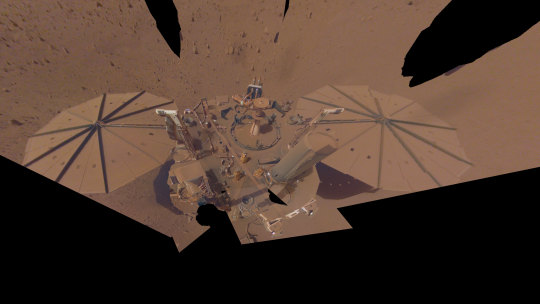
NASA’s InSight lander captured this selfie on Mars on April 24, 2022, the 1,211th Martian day, or sol, of the mission.
2. Data analyzed in 2023 from NASA’s retired InSight Mars lander provided new details about how fast the Red Planet rotates and how much it wobbles. Scientists leveraged InSight’s advanced radio technology, upgrades to the Deep Space Network, and radio signals to determine that Mars’ spin rate is increasing, while making the most precise measurements ever of Mars’ rotation.
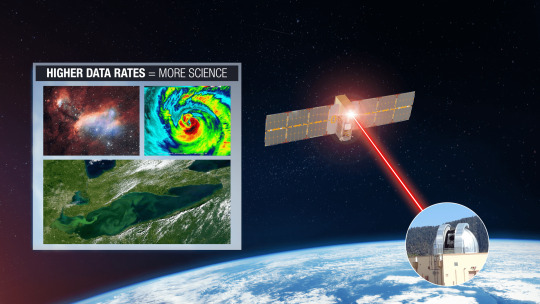
TBIRD is demonstrating a direct-to-Earth laser communications link from low Earth orbit to a ground station on Earth.
3. We set a new high record! The TeraByte InfraRed Delivery (TBIRD) payload – also demonstrating laser communications like ILLUMA-T and LCRD – downlinked 4.8 terabytes of data at 200 Gbps in a single 5-minute pass. This is the highest data rate ever achieved by laser communications technology. To put it in perspective a single terabyte is the equivalent of about 500 hours of high-definition video.
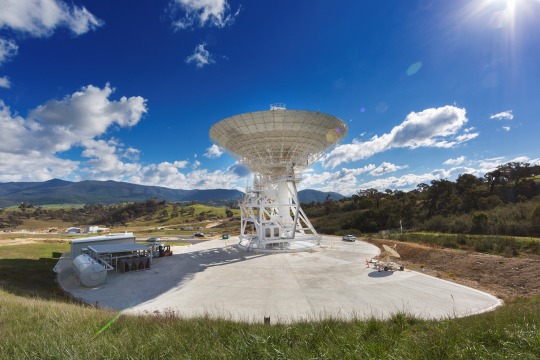
A 34-meter (112-foot) wide antenna at Canberra Deep Space Communications Complex near Canberra, Australia.
4. This year we celebrated the Deep Space Network’s 60th anniversary. This international array of antennas located at three complexes in California, Spain, and Australia allow us to communicate with spacecraft at the Moon and beyond. Learn more about the Deep Space Network’s legacy and future advancements.
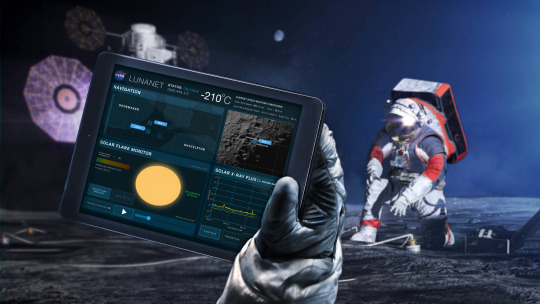
An illustration of the LunaNet architecture. LunaNet will bring internet-like services to the Moon.
5. We are bringing humans to the Moon with Artemis missions. During expeditions, astronauts exploring the surface are going to need internet-like capabilities to talk to mission control, understand their routes, and ensure overall safety. The space comm and nav group is working with international partners and commercial companies to develop LunaNet, and in 2023, the team released Draft LunaNet Specification Version 5, furthering development.
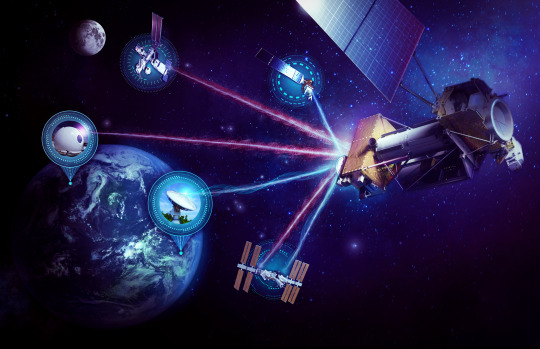
The High-Rate Delay Tolerant Networking node launched to the International Space Station in November and will act as a high-speed path for data.
6. In addition to laser communications, ILLUMA-T on the International Space Station is also demonstrating high-rate delay/disruption tolerant networking (HDTN). The networking node is showcasing a high-speed data path and a store-and-forward technique. HDTN ensures data reaches its final destination and isn’t lost on its path due to a disruption or delay, which are frequent in the space environment.
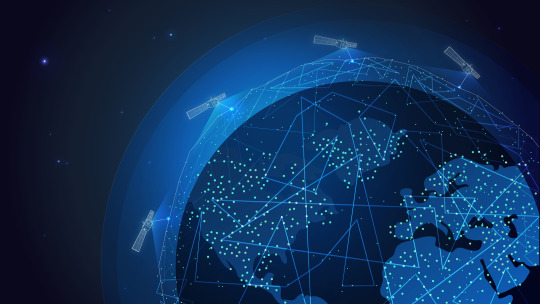
The Communications Services Project (CSP) partners with commercial industry to provide networking options for future spaceflight missions.
7. The space comm and nav team is embracing the growing aerospace industry by partnering with commercial companies to provide multiple networking options for science and exploration missions. Throughout 2023, our commercialization groups engaged with over 110 companies through events, one-on-one meetings, forums, conferences, and more. Over the next decade, NASA plans to transition near-Earth services from government assets to commercial infrastructure.

Middle and high school students solve a coding experiment during NASA's Office of STEM Engagement App Development Challenge.
8. Every year, NASA’s Office of STEM Engagement sponsors the App Development Challenge, wherein middle and high school students must solve a coding challenge. This year, student groups coded an application to visualize the Moon’s South Pole region and display information for navigating the Moon’s surface. Our space communications and navigation experts judged and interviewed students about their projects and the top teams visited NASA’s Johnson Space Center in Houston!
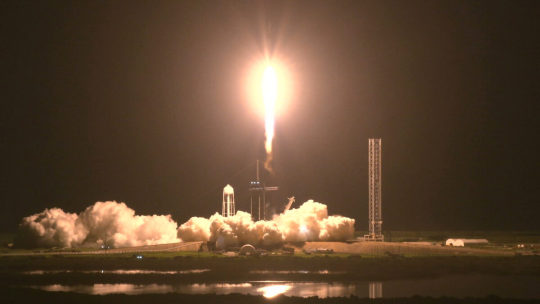
A SpaceX Falcon 9 rocket soars upward after liftoff at the pad at 3:27 a.m. EDT on Saturday, Aug. 26, from Kennedy Space Center’s Launch Complex 39A in Florida carrying NASA’s SpaceX Crew-7 crew members to the International Space Station. Aboard SpaceX’s Dragon spacecraft are NASA astronaut Jasmin Moghbeli, ESA (European Space Agency) astronaut Andreas Mogensen, JAXA (Japan Aerospace Exploration Agency) astronaut Satoshi Furukawa, and Roscosmos cosmonaut Konstantin Borisov.
9. The Near Space Network supported 19 launches in 2023! Launches included Commercial Crew flights to the International Space Station, science mission launches like XRISM and the SuperBIT balloon, and many more. Once in orbit, these satellites use Near Space Network antennas and relays to send their critical data to Earth. In 2023, the Near Space Network provided over 10 million minutes of communications support to missions in space.
Here’s to another year connecting Earth and space.
Make sure to follow us on Tumblr for your regular dose of space!
1K notes
·
View notes
Text
NASA is demonstrating laser communications on multiple missions—showcasing the benefits infrared light can have for science and exploration missions transmitting terabytes of important data.
The International Space Station is getting a "flashy" technology demonstration this November. The ILLUMA-T (Integrated Laser Communications Relay Demonstration Low Earth Orbit User Modem and Amplifier Terminal) payload is launching to the International Space Station to demonstrate how missions in low Earth orbit can benefit from laser communications.
Laser communications uses invisible infrared light to send and receive information at higher data rates, providing spacecraft with the capability to send more data back to Earth in a single transmission and expediting discoveries for researchers.
Managed by NASA's Space Communications and Navigation (SCaN) program, ILLUMA-T is completing NASA's first bi-directional, end-to-end laser communications relay by working with the agency's LCRD (Laser Communications Relay Demonstration). LCRD launched in December 2021 and is currently demonstrating the benefits of laser communications from geosynchronous orbit by transmitting data between two ground stations on Earth in a series of experiments.
Continue Reading
84 notes
·
View notes
Text


NASA to demonstrate laser communications from space station
NASA uses the International Space Station — a football field-sized spacecraft orbiting Earth — to learn more about living and working in space. For over 20 years, the space station has provided a unique platform for investigation and research in areas like biology, technology, agriculture, and more. It serves as a home for astronauts conducting experiments, including advancing NASA’s space communications capabilities.
In 2023, NASA is sending a technology demonstration known as the Integrated LCRD Low Earth Orbit User Modem and Amplifier Terminal (ILLUMA-T) to the space station. Together, ILLUMA-T and the Laser Communications Relay Demonstration (LCRD), which launched in December 2021, will complete NASA’s first two-way, end-to-end laser relay system.
With ILLUMA-T, NASA’s Space Communications and Navigation (SCaN) program office will demonstrate the power of laser communications from the space station. Using invisible infrared light, laser communications systems send and receive information at higher data rates. With higher data rates, missions can send more images and videos back to Earth in a single transmission. Once installed on the space station, ILLUMA-T will showcase the benefits higher data rates could have for missions in low Earth orbit.
“Laser communications offer missions more flexibility and an expedited way to get data back from space,” said Badri Younes, former deputy associate administrator for NASA's SCaN program. “We are integrating this technology on demonstrations near Earth, at the Moon, and in deep space.”
In addition to higher data rates, laser systems are lighter and use less power — a key benefit when designing spacecraft. ILLUMA-T is approximately the size of a standard refrigerator and will be secured to an external module on the space station to conduct its demonstration with LCRD.
Currently, LCRD is showcasing the benefits of a laser relay in geosynchronous orbit – 22,000 miles from Earth – by beaming data between two ground stations and conducting experiments to further refine NASA’s laser capabilities.
“Once ILLUMA-T is on the space station, the terminal will send high-resolution data, including pictures and videos to LCRD at a rate of 1.2 gigabits-per-second,” said Matt Magsamen, deputy project manager for ILLUMA-T. “Then, the data will be sent from LCRD to ground stations in Hawaii and California. This demonstration will show how laser communications can benefit missions in low Earth orbit.”
ILLUMA-T is launching as a payload on SpaceX’s 29th Commercial Resupply Services mission for NASA. In the first two weeks after its launch, ILLUMA-T will be removed from the Dragon spacecraft’s trunk for installation on the station’s Japanese Experiment Module-Exposed Facility (JEM-EF), also known as “Kibo” — meaning “hope” in Japanese.
Following the payload’s installation, the ILLUMA-T team will perform preliminary testing and in-orbit checkouts. Once completed, the team will make a pass for the payload’s first light — a critical milestone where the mission transmits its first beam of laser light through its optical telescope to LCRD.
Once first light is achieved, data transmission and laser communications experiments will begin and continue throughout the duration of the planned mission.
Testing Lasers in Different Scenarios
In the future, operational laser communications will supplement radio frequency systems, which most space-based missions use today to send data home. ILLUMA-T is not the first mission to test laser communications in space but brings NASA closer to operational infusion of the technology.
Aside from LCRD, ILLUMA-T’s predecessors include the 2022 TeraByte InfraRed Delivery system, which is currently testing laser communications on a small CubeSat in low Earth orbit; the Lunar Laser Communications Demonstration, which transferred data to and from lunar orbit to the Earth and back during the Lunar Atmosphere and Dust Environment Explorer mission in 2014; and the 2017 Optical Payload for Lasercomm Science, which demonstrated how laser communications can speed up the flow of information between Earth and space compared to radio signals.
Testing the ability for laser communications to produce higher data rates in a variety of scenarios will help the aerospace community further refine the capability for future missions to the Moon, Mars, and deep space.
The ILLUMA-T payload is managed by NASA’s Goddard Space Flight Center in Greenbelt, Maryland. Partners include the International Space Station program office at NASA’s Johnson Space Center in Houston and the Massachusetts Institute of Technology Lincoln Laboratory. ILLUMA-T is funded by the Space Communications and Navigation (SCaN) program at NASA Headquarters in Washington.
TOP IMAGE....NASA's ILLUMA-T payload communicating with LCRD over laser signals. Artist's concept. Credits: NASA/Dave Ryan
LOWER IMAGE....NASA's ILLUMA-T payload in a Goddard cleanroom. The payload will be installed on the International Space Station and demo higher data rates with NASA's Laser Communications Relay Demonstration. Credit: Dennis Henry
2 notes
·
View notes
Note
Are you The one who made the wander over yonder gone rouge au?
Yep, that's me! I wrote both @lcrd-commander and @off-the-peep-end, as well as did the art for them!
4 notes
·
View notes
Text
NASA’s Space Station Laser Comm Terminal Achieves First Link - Technology Org
New Post has been published on https://thedigitalinsider.com/nasas-space-station-laser-comm-terminal-achieves-first-link-technology-org/
NASA’s Space Station Laser Comm Terminal Achieves First Link - Technology Org
A NASA technology experiment on the International Space Station completed its first laser link with an in-orbit laser relay system on Dec. 5, 2023. Together, they complete NASA’s first two-way, end-to-end laser relay system.
NASA’s ILLUMA-T payload communicating with LCRD over laser signals. Image credit: NASA / Dave Ryan
NASA’s LCRD (Laser Communications Relay Demonstration) and the new space station demonstration, ILLUMA-T (Integrated LCRD Low Earth Orbit User Modem and Amplifier Terminal), successfully exchanged data for the first time.
LCRD and ILLUMA-T are demonstrating how a user mission, in this case the space station, can benefit from a laser communications relay located in geosynchronous orbit.
The benefits of laser communications: more efficient, lighter systems, increased security, and more flexible ground systems. Image credit: NASA / Dave Ryan
Laser communications, also known known as optical communications, uses infrared light rather than traditional radio waves to send and receive signals. The tighter wavelength of infrared light allows spacecraft to pack more data into each transmission. Using laser communications greatly increases the efficiency of data transfer and can lead to a faster pace of scientific discoveries.
NASA’s SpaceX 29th commercial resupply services mission launched cargo and new science experiments, including ILLUMA-T, to the space station. Following its arrival, the payload was installed onto the station’s Japanese Experiment Module-Exposed Facility.
ILLUMA-T and LCRD are a part of the NASA Space Communications and Navigation (SCaN) program’s effort to demonstrate how laser communications technologies can significantly benefit science and exploration missions.
“ILLUMA-T’s first link with LCRD – known as first light – is the latest demonstration proving that laser communications is the future.” said Dr. Jason Mitchell, director of SCaN’s Advanced Communications and Navigation Technology division.
“Laser communications will not only return more data from science missions, but could serve as NASA’s critical, two-way link to keep astronauts connected to Earth as they explore the Moon, Mars, and beyond.”
Shortly after space station installation, operation engineers began conducting on-orbit testing to ensure the ILLUMA-T payload operated nominally. Now, it is communicating with LCRD, a relay launched in 2021 that has conducted over 300 experiment configurations to help NASA refine laser communications technologies. LCRD and ILLUMA-T are exchanging data at 1.2 gigabits-per-second.
“We have demonstrated that we can overcome the technical challenges for successful space communications using laser communications. We are now performing operational demonstrations and experiments that will allow us to optimize our infusion of proven technology into our missions to maximize our exploration and science,” said David Israel, a NASA space communications and navigation architect.
NASA’s Laser Communications Roadmap: Demonstrating laser communications capabilities on multiple missions in a variety of space regimes. Image credit: NASA/Dave Ryan
The LCRD experiments are conducted with industry, academia, and other government agencies. ILLUMA-T is now LCRD’s first in-space user experiment. NASA is still accepting experiments to work with LCRD. Interested parties should contact [email protected] for more information.
Source: National Aeronautics and Space Administration
You can offer your link to a page which is relevant to the topic of this post.
#2023#Administration#aeronautics#astronauts#communications#data#data transfer#Discoveries#earth#efficiency#email#engineers#Featured Space news#Fundamental physics news#Future#Government#how#Industry#International Space Station#Israel#it#laser#lasers#Light#Link#mars#module#Moon#NASA#National Aeronautics and Space Administration
0 notes
Link
3 Min Read NASA’s Space Station Laser Comm Terminal Achieves First Link NASA’s ILLUMA-T payload at Goddard Space Flight Center fully tested and integrated prior to its delivery to Kennedy Space Center. Credits: NASA's Goddard Space Flight Center A NASA technology experiment on the International Space Station completed its first laser link with an in-orbit laser relay system on Dec. 5, 2023. Together, they complete NASA’s first two-way, end-to-end laser relay system. NASA’s LCRD (Laser Communications Relay Demonstration) and the new space station demonstration, ILLUMA-T (Integrated LCRD Low Earth Orbit User Modem and Amplifier Terminal), successfully exchanged data for the first time. LCRD and ILLUMA-T are demonstrating how a user mission, in this case the space station, can benefit from a laser communications relay located in geosynchronous orbit. NASA’s ILLUMA-T payload communicating with LCRD over laser signals.NASA / Dave Ryan Laser communications, also known known as optical communications, uses infrared light rather than traditional radio waves to send and receive signals. The tighter wavelength of infrared light allows spacecraft to pack more data into each transmission. Using laser communications greatly increases the efficiency of data transfer and can lead to a faster pace of scientific discoveries. The benefits of laser communications: more efficient, lighter systems, increased security, and more flexible ground systems.NASA / Dave Ryan On Nov. 9, NASA’s SpaceX 29th commercial resupply services mission launched cargo and new science experiments, including ILLUMA-T, to the space station. Following its arrival, the payload was installed onto the station’s Japanese Experiment Module-Exposed Facility. The SpaceX Falcon 9 rocket carrying the Dragon spacecraft lifts off from Launch Complex 39A at NASA’s Kennedy Space Center in Florida on Thursday, Nov. 9, 2023, on the company’s 29th commercial resupply services mission for the agency to the International Space Station. Liftoff was at 8:28 p.m. EST. SpaceX ILLUMA-T and LCRD are a part of the NASA Space Communications and Navigation (SCaN) program’s effort to demonstrate how laser communications technologies can significantly benefit science and exploration missions. “ILLUMA-T’s first link with LCRD – known as first light – is the latest demonstration proving that laser communications is the future.” said Dr. Jason Mitchell, director of SCaN’s Advanced Communications and Navigation Technology division. “Laser communications will not only return more data from science missions, but could serve as NASA’s critical, two-way link to keep astronauts connected to Earth as they explore the Moon, Mars, and beyond.” To view this video please enable JavaScript, and consider upgrading to a web browser that supports HTML5 video NASA's ILLUMA-T payload achieved First Light with LCRD. In this video, Matt Magsamen explains the First Light milestone. Shortly after space station installation, operation engineers began conducting on-orbit testing to ensure the ILLUMA-T payload operated nominally. Now, it is communicating with LCRD, a relay launched in 2021 that has conducted over 300 experiment configurations to help NASA refine laser communications technologies. LCRD and ILLUMA-T are exchanging data at 1.2 gigabits-per-second. “We have demonstrated that we can overcome the technical challenges for successful space communications using laser communications. We are now performing operational demonstrations and experiments that will allow us to optimize our infusion of proven technology into our missions to maximize our exploration and science,” said David Israel, a NASA space communications and navigation architect. NASA’s Laser Communications Roadmap: Demonstrating laser communications capabilities on multiple missions in a variety of space regimes.NASA/Dave Ryan The LCRD experiments are conducted with industry, academia, and other government agencies. ILLUMA-T is now LCRD’s first in-space user experiment. NASA is still accepting experiments to work with LCRD. Interested parties should contact [email protected] for more information. ILLUMA-T is funded by NASA’s Space Communications and Navigation (SCaN) program at NASA Headquarters in Washington. The payload is managed by NASA’s Goddard Space Flight Center in Greenbelt, Maryland. Partners include the International Space Station program office at NASA’s Johnson Space Center in Houston and the Massachusetts Institute of Technology Lincoln Laboratory in Lexington, Massachusetts. For more information: https://nasa.gov/scan About the AuthorKatherine SchauerKatherine Schauer is a writer for the Space Communications and Navigation (SCaN) program office and covers emerging technologies, commercialization efforts, exploration activities, and more. Share Details Last Updated Dec 18, 2023 ContactKatherine [email protected] Space Flight Center Related TermsCommunicating and Navigating with MissionsGeneralGoddard Space Flight CenterInternational Space Station (ISS)ISS ResearchLaser Communications RelaySpace Communications & Navigation ProgramTechnology Demonstration Explore More 5 min read NASA’s First Two-way End-to-End Laser Communications Relay System Article 2 months ago 6 min read NASA’s Laser Communications Relay: A Year of Experimentation NASA’s first two-way laser relay system completed its first year of experiments on June 28… Article 6 months ago 4 min read NASA to Demonstrate Laser Communications from Space Station In 2023, NASA is sending a technology demonstration known as the Integrated LCRD Low Earth… Article 4 months ago
0 notes
Text
NASAs Space Station Laser Comm Terminal Achieves First Link
A NASA technology experiment on the International Space Station completed its first laser link with an in-orbit laser relay system on Dec. 5, 2023. Together, they complete NASA’s first two-way, end-to-end laser relay system. NASA’s LCRD (Laser Communications Relay Demonstration) and the new space station demonstration, ILLUMA-T (Integrated LCRD Low Earth Orbit User Modem and […]
from NASA https://ift.tt/vsxVcMN
0 notes
Text
Laser Communications Revolution: NASA Space Breakthrough

Advancing Laser Communications
In a remarkable display of cutting-edge technology, NASA is embarking on a mission to revolutionize data transmission from the International Space Station (ISS). The ILLUMA-T (Integrated Laser Communications Relay Demonstration Low Earth Orbit User Modem and Amplifier Terminal) payload will launch this November. It will showcase how laser communications enhance missions in low Earth orbit, clearing the path for scientific breakthroughs and exploration expeditions.
Harnessing the Power of Infrared Light
Laser communications, employing invisible infrared light, is poised to make a significant impact on the transmission of data. This breakthrough technology allows spacecraft to transmit and receive information at much higher data rates, granting them the ability to send copious amounts of data back to Earth in a single transmission, ultimately expediting discoveries for researchers.

NASA’s ILLUMA-T payload was delivered to SpaceX Dragonland. Photo by SpaceX. NASA.
ILLUMA-T: A Space Communications Game-Changer
Operated within NASA's Space Communications and Navigation (SCaN) program, ILLUMA-T pioneers a groundbreaking bi-directional, end-to-end laser communications relay. It collaborates with NASA's Laser Communications Relay Demonstration (LCRD), which embarked on its mission in December 2021.
Together, ILLUMA-T and LCRD are laying the foundation for a new era in communication innovation. Currently, LCRD demonstrates the remarkable advantages of laser communications from geosynchronous orbit by transmitting data between two ground stations on Earth and conducting a series of groundbreaking experiments.
Unveiling LCRD's Potential
The LCRD experiments encompass a range of initiatives, including the examination of atmospheric effects on laser signals, verification of LCRD's ability to collaborate with multiple users, testing network capabilities like delay/disruption tolerant networking (DTN) over laser links, and the enhancement of navigation capabilities.
ILLUMA-T's Optical Module
ILLUMA-T's optical module comprises a telescope and a two-axis gimbal, enabling precise pointing and tracking of LCRD in geosynchronous orbit. Moreover, the compact optical module, compact, roughly the size of a microwave, and the payload itself, equivalent in size to a standard refrigerator, facilitate advanced space communication.
The Data Relay Process
Once installed on the exterior of the ISS, ILLUMA-T will facilitate the relay of data from the space station to LCRD at an impressive speed of 1.2 gigabits per second. LCRD will then transmit the data to optical ground stations in California or Hawaii. Following this, the data will route to NASA's LCRD Mission Operations Center at the White Sands Complex in Las Cruces, New Mexico. Engineers at NASA's Goddard Space Flight Center in Greenbelt, Maryland, will then verify the accuracy and quality of the data sent through this end-to-end relay process.
Paving the Way for Enhanced Data Transmission
"Illuminating" the potential of laser communications, ILLUMA-T, and LCRD are poised to transform space communications capabilities. Following the experimental phase with LCRD, ILLUMA-T could become an integral part of the space station, significantly increasing the volume of data NASA can send to and from the orbiting laboratory.
Revolutionizing Space Communications
While the space station has historically relied on radio frequency relay satellites for data transmission, laser communications have the potential to be a game-changer for researchers on Earth conducting experiments aboard the ISS. In fields ranging from biological and physical sciences to technology and Earth observations, astronauts conduct research for the benefit of humanity.
ILLUMA-T offers the capacity to significantly enhance data rates for these experiments, capable of sending the equivalent of an average movie's worth of data in under a minute, at an astounding speed of 1.2 Gbps.

NASA’s Laser Communications Roadmap – proving the technology’s validity in a variety of regimes. Photo by Dave Ryan. NASA.
A Leap Forward in Space Communications
This monumental ILLUMA-T / LCRD end-to-end laser communications relay system represents a crucial step forward in space communications capabilities. In conjunction with past and upcoming demonstrations, NASA is highlighting the transformative potential of laser communications systems for both near-Earth and deep space exploration.
A Future of Laser Communications
The goal of these demonstrations is to seamlessly integrate laser communications as a capability within NASA's space communications networks—the Near Space Network and Deep Space Network. Mission planners interested in leveraging laser communications are encouraged to reach out to [email protected].
Advancing Space Communications Through Innovation
NASA's Laser Communication Initiatives
The ILLUMA-T payload, funded by the Space Communications and Navigation (SCaN) program at NASA Headquarters in Washington, is under the management of NASA's Goddard Space Flight Center in Greenbelt, Maryland. The project enjoys collaborative support from the International Space Station program office at NASA's Johnson Space Center in Houston and the Massachusetts Institute of Technology (MIT) Lincoln Laboratory in Lexington, Massachusetts.
LCRD, spearheaded by Goddard in collaboration with NASA's Jet Propulsion Laboratory in Southern California and the MIT Lincoln Laboratory, receives funding through NASA's Technology Demonstration Missions program, which falls under the Space Technology Mission Directorate, and the Space Communications and Navigation (SCaN) program at NASA Headquarters in Washington.
Sources: THX News & NASA.
Read the full article
#CommunicationBreakthroughs#ILLUMA-TandLCRD#ILLUMA-TMission#InfraredLightBenefits#LaserCommunicationRevolution#LaserCommunications#LaserTechnologyAdvancements#NASALaserRelay#SpaceDataTransmission#SpaceStationDataTransfer
0 notes
Text
SpaceX resupply mission will bring NASA laser communication system to ISS this year
Space.com
By Rahul Rao
August 30, 2023
Later this year, SpaceX’s 29th Commercial Resupply Services mission will lift a refrigerator-sized device to the International Space Station.
This device — given the catchy name of Integrated LCRD Low Earth Orbit User Modem and Amplifier Terminal (ILLUMA-T) — will complete NASA’s first two-way, end-to-end laser communications system. Harnessing laser beams,…
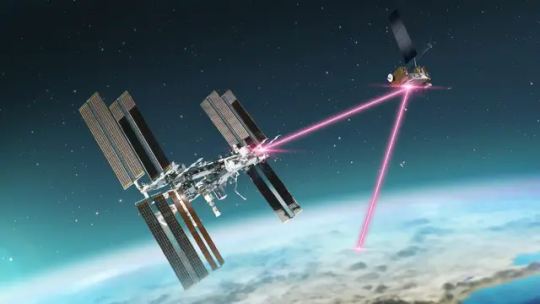
View On WordPress
0 notes
Text
NASA s demostrara comunicación laser desde la estación espacial internacional
NASA s demostrara comunicación laser desde la estación espacial internacional
Durante más de 20 años, la estación espacial ha proporcionado una plataforma única para la investigación en áreas como biología, tecnología, agricultura y más.
La NASA utiliza la Estación Espacial Internacional (una nave espacial del tamaño de un campo de fútbol que orbita la Tierra) para aprender más sobre cómo vivir y trabajar en el espacio
La carga útil ILLUMA-T de la NASA se comunica con LCRD a través de señales láser. Créditos: NASA/Dave Ryan
Durante más de 20 años, la estación espacial ha proporcionado una plataforma única para la investigación…

View On WordPress
#Centro de Vuelo Espacial Goddard#Comunicación#demostración de tecnología#Estación Espacial#NASA#tecnología espacial
0 notes
Photo

SpaceX resupply mission will bring NASA laser communication system to ISS this year
---
1 note
·
View note
Text
[ad_1]
NASA’s Laser Communications Relay Demonstration, or LCRD, introduced aboard a United Release Alliance Atlas V rocket on Tuesday, Dec. 7, 2021.
[ad_2]
#Laser #Communications #Relay #Demonstration #Lifts
0 notes
Text
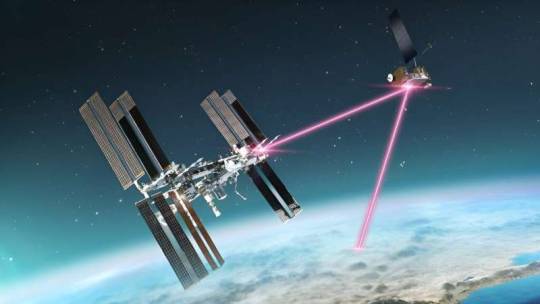
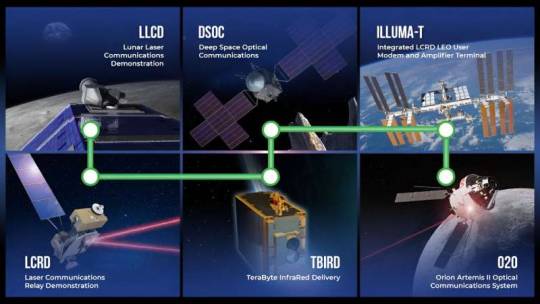
NASA's space station laser comm terminal achieves first link
A NASA technology experiment on the International Space Station completed its first laser link with an in-orbit laser relay system on Dec. 5, 2023. Together, they complete NASA's first two-way, end-to-end laser relay system.
NASA's LCRD (Laser Communications Relay Demonstration) and the new space station demonstration, ILLUMA-T (Integrated LCRD Low Earth Orbit User Modem and Amplifier Terminal), successfully exchanged data for the first time. LCRD and ILLUMA-T are demonstrating how a user mission, in this case the space station, can benefit from a laser communications relay located in geosynchronous orbit.
Laser communications, also known as optical communications, uses infrared light rather than traditional radio waves to send and receive signals. The tighter wavelength of infrared light allows spacecraft to pack more data into each transmission. Using laser communications greatly increases the efficiency of data transfer and can lead to a faster pace of scientific discoveries.
On Nov. 9, NASA's SpaceX 29th commercial resupply services mission launched cargo and new science experiments, including ILLUMA-T, to the space station. Following its arrival, the payload was installed onto the station's Japanese Experiment Module-Exposed Facility.
ILLUMA-T and LCRD are a part of the NASA Space Communications and Navigation (SCaN) program's effort to demonstrate how laser communications technologies can significantly benefit science and exploration missions.
Shortly after space station installation, operation engineers began conducting on-orbit testing to ensure the ILLUMA-T payload operated nominally. Now, it is communicating with LCRD, a relay launched in 2021 that has conducted over 300 experiment configurations to help NASA refine laser communications technologies. LCRD and ILLUMA-T are exchanging data at 1.2 gigabits-per-second.
"We have demonstrated that we can overcome the technical challenges for successful space communications using laser communications. We are now performing operational demonstrations and experiments that will allow us to optimize our infusion of proven technology into our missions to maximize our exploration and science," said David Israel, a NASA space communications and navigation architect.
1 note
·
View note